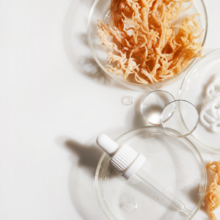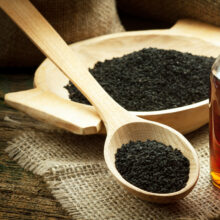Top Detox Spas: What does it mean? How does it work?
- Published: Thursday, January 7th 2010
- in Nutrition
Edited from an Article by Aimee Lee Ball
The dictionary says that toxic means “poisonous,” but modern cultural connotations far outstrip that definition. We speak in the same breath about the “toxic” effects of too many mochaccinos and martinis, the News at Eleven and the rush-hour commute. It’s become commonplace to think of the world as toxic.
We’ve also come to regard ourselves as toxic dumps. Detox is one of the defining notions (and rituals) of our time. A decade ago, detox was not often used in polite conversation, but it has since acquired a luxuriant bloom of new meanings.
Nowhere has the word taken stronger root than at spas. On the average spa menu, it’s rare to find a treatment that isn’t described as detoxifying. But how can a term that covers everything (even sweating) have much validity? What makes a treatment detoxifying? What happens to your body when detox at a spa?
Detox: Valid Concept or Not?
Detox regimes usually reference four kinds of toxicity: the body’s metabolic waste, from feces to free radicals (unstable molecules believed to speed up aging); dietary bugaboos such as alcohol and caffeine,psychological factors such as stress and overwork; and environmental pollutants such as mercury in fish and petrochemicals in textiles. Opinions about detox and the various ways of accomplishing it vary to a surprising degree, often so widely that they’re irreconcilable.
For Mark Hyman, M.D., the editor in chief of Alternative Therapies in Health and Medicine and former co–medical director of Canyon Ranch in Lenox, Massachusetts, detox is an absolutely valid concept and a necessary practice. “Most people don’t realize that the top four things bought in supermarkets are drugs: caffeine, alcohol, nicotine, and sugar,” says Hyman. “We use them to modulate our energy and our mood. They’re all chemical substances, with the potential to be toxic.” It’s the buildup of these substances in the system that poses a threat, according to Dr. Hyman. “There are some laws of nature we have to follow, “and getting rid of garbage is one of them. If you’re not effective in getting rid of toxins, they can accumulate and make you sick,” he says.
Detox should not be a short-term purge, but a lifestyle that includes drinking filtered water, eating vegetables,using houseplants as natural air filters, avoiding dry-cleaning solvents, removing shoes indoors, practicing yoga, and unplugging from cyberspace.
At the other extreme is Peter Pressman, M.D., an attending physician in internal medicine at Cedars-Sinai Medical Center in Los Angeles. He sees the detox vogue as opportunistic and unfounded and considers most detox claims to be marketing dressed up as science. “Part of the problem is that, you get different recipes for health via detox. There are as many variations on the theme as there are proponents and purveyors of products that are supposed to be central elements, whether it’s mineral waters or sweat lodges or enemas for colonic irrigation.”
Dr. Pressman discredits the idea that the organs responsible for detoxing need a break, or should be evacuated, or can be enhanced by such “recipes.”
“The liver, kidneys, and GI tract are devoted to maintaining our healthy and balanced condition,” he says, “and they do an incredible job. They don’t want to rest. They want to work—that’s what they thrive on. Our various lines of defense are marvelously designed to deal with either eliminating or neutralizing wastes. There’s no evidence that simplification of the diet or flooding the body with water or nutraceuticals can help you out in any sense.”
Richard DeAndrea, M.D., N.D., could not disagree more with Dr. Pressman. Dr. DeAndrea, a medical adviser to the American Naturopathic Medical Association, leads a 21-day detox in Los Angeles, a program he refers to as “taking your digestive system to the gym.” During the workshop, participants go from a vegetarian diet to a raw diet to a liquid diet.
Detox as Relaxation
At Oasis Day Spa in New York City, four ounces of a massage oil “helps remove toxins from your body.” At Sea Spa in Santa Barbara, California, the detox massage is recommended for “activating the body’s natural immune system.” At St. David’s Hotel & Spa in Wales, there’s a three-day “thalasso detox,” and at the Imperial Queen’s Park Hotel Mandara Spa in Bangkok, the mud therapy is said to “detoxify, decongest, and stimulate your body system.” It’s reasonable to wonder: How?
The primary job of the lymph system, is to identify toxins, not remove them. “Lymph nodes do not process most metabolic waste products or toxins,” explains immunologist Russell Leftwich, M.D., the director of the Allergy Center at Baptist Hospital in Nashville. “They detect and respond to elements of bacteria, viruses, fungi, parasites, and abnormal cells as the second line of defense in our immune system, after the skin. Waste products and toxins pass right on through to the bloodstream.”
In a healthy person, the lymph system can’t even be massaged. “There’s no evidence that manual lymph drainage increases the removal of toxins or stimulates the immune system,” says Robert Harris, the director and senior instructor of the Dr. Vodder School of North America in Victoria, British Columbia, the continent’s leading school for lymph-drainage techniques. “There are people who claim they can feel lymph flow and redirect. I’ve been doing this for 20 years, and I’ve never felt lymph vessels moving, and you can’t see them with the naked eye.”
That’s not to say that the relaxation brought on by a spa treatment isn’t beneficial. “Relaxing somewhere is a detox in the broadest sense,” says Daniel Cosgrove, M.D., the medical director of the WellMax Center for Preventive Medicine near Palm Springs, California. “Where I get uncomfortable is the suggestion that it’s a medical detoxification. They’re going to wrap you in something and use special mud—what is that going to detoxify you of? I never get a real straight answer.”
Dr. Cosgrove likens the therapeutic effect of such feel-good treatments to the phenomenon of blood pressure dropping when you hold a puppy—it’s just hard to draw a medical line from one thing to the other. “If somebody’s in a really stressful environment, eating trans fats, not exercising, and that person goes to a spa and gets water therapies and decreases muscle tightness, in a way it is detoxifying.”
Detox as Colonic Irrigation
The popularity of colon cleansing owes a lot to John Harvey Kellogg, the 19th-century physician who also invented corn flakes. He often lectured about “autointoxication,” arguing that the body could actually poison itself, absorbing toxins from fecal matter into the bloodstream via the lining of the large intestine. Colonic advocates today also contend that a certain amount of waste is stored in the folds of the intestinal lining as it passes through and that flushing out this matter is detoxifying.
“From a scientific point of view, the idea of flushing out the colon is utter nonsense,” maintains James J. Kenney, Ph.D., the nutrition research specialist at the Pritikin Longevity Center & Spa in Doral, Florida. “The cells that line the intestines are epithelial cells. They’re constantly turning over, sloughing off. It’s very slippery—there’s no way stuff can stick there.” Kenney concurs that we’re “putting into the body that which the body is not designed to handle,” and that we’re not getting enough of the right stuff. “The human colon is designed for a lot of fiber passing through it and fermenting,” he says. “But colonics do nothing to help that problem.
Detox as Healthy Diet
At the Chopra Center in New York City participants in the “Perfect Health with Panchakarma” program are taught the Ayurvedic line: Detox involves releasing “undigested matter,” whether literally (food) or figuratively (stress); toxicity, called ama, is said to reside in fat; and treatment involves copious amounts of oil (in food, massages, and enemas) to pull the ama out. At Elemental Embrace in Ontario, detox involves making the body more alkaline and less acidic, which is why every meal begins with a teaspoon of ginger, lime, and salt. At Pritikin, salt is Public Enemy Number One, followed closely by cholesterol, saturated and hydrogenated fats, and excess calories.
It’s the acid-alkaline chemistry of our cells,that’s the most significant aspect of a healthy “biological terrain,” according to Elson M. Haas, M.D., who fashions himself as “the detox doc.” “Most chronic degenerative diseases come from overacidity in the body that’s stored in tissues and causes the body to age,” he maintains. The “detox diet” that Dr. Haas advocates is based on alkaline foods: vegetables, fruits, and whole grains.
Pritikin’s Kenney agrees that diet is key but says,“Detox is a vague and useless term. A lot of things are done in spas and clinics with claims being made, but they’re not being honest or scientific. The liver takes chemicals that could disrupt cellular function and converts them into chemicals that do not disrupt cellular function. Help the liver out other by giving it what it needs, which is a good healthy diet.
Detox as Fasting
“The body needs certain stuff to detoxify,” says Dr. Hyman, “and if you’re not taking anything in, you’re not supporting your system.” The annual “Detox for Life” week that he hosts at Maroma Resort and Spa in Mexico based on “healing foods” and “mindful eating.” Fasting stresses the body unnecessarily. The whole idea of cleansing where people feel horrible is unnecessary.”
Short-term fasts are counterproductive, according to Kenney. Serum cholesterol can go up by as much as 25 percent because the body starts releasing fat for energy. There’s also an increase in uric acid, resulting in crystals that accumulate in joints causing gout. And fasting induces ketosis: When the liver must burn fat instead of sugar, it produces chemicals called ketone bodies that make the energy from fat available in water-soluble form. It’s the body’s response to starvation.
“The criticisms of fasting are almost all true—they’re just not relevant for medically supervised fasting,” defends Alan Goldhamer, D.C., a chiropractor who directs supervised fasting programs at True North Health Center in Penngrove, California. “As a potential tool to allow the body to heal itself, there’s no technique we know of that’s more effective. You’re mobilizing cholesterol out of the vessels right into the bloodstream. Uric acid is increased because you’re living off cells which contain uric acid. Once the body is allowed to return to a normal physiology, the kidneys clear the excess uric acid and increased levels are not produced. Cholesterol not only returns to normal but may reduce by 100 points or more as the body is able to heal itself.”
Goldhamer cites two studies from his center, one involving 174 people and published in the Journal of Manipulative and Physiological Therapeutics, another involving 68 people and published in the Journal of Alternative and Complementary Medicine, in which fasting was effective in treating hypertension. He cautions that benefits won’t be sustained unless a fast is followed by an effective diet and exercise program.
“Some people, for example, those uptight two-BMs-a-week people, would do well to take both relaxation and cleansing the bowels seriously, but there are many ways to gently cleanse that big lumen from the mouth to the anus without starving, without enemas, and supporting the system with nutrients and antioxidants,” says Dr. Cosgrove.
In the end the subject of detox is vast, with seemingly smart people both embracing and debunking it. I digested claim and counterclaim, I could see one point on which both sides generally agreed: that there’s not much validity to the idea of a short-term “fix,” followed by a return to life as we know it on earth. If you go back to the dictionary, you find that the equal and opposite reaction to a purge is a refill. The soundest people are really advocating a daily commitment to fostering good nutritional habits, exercising regularly, and minimizing exposure to environmental toxins. Not electrifying, but something we can (literally) live with.


